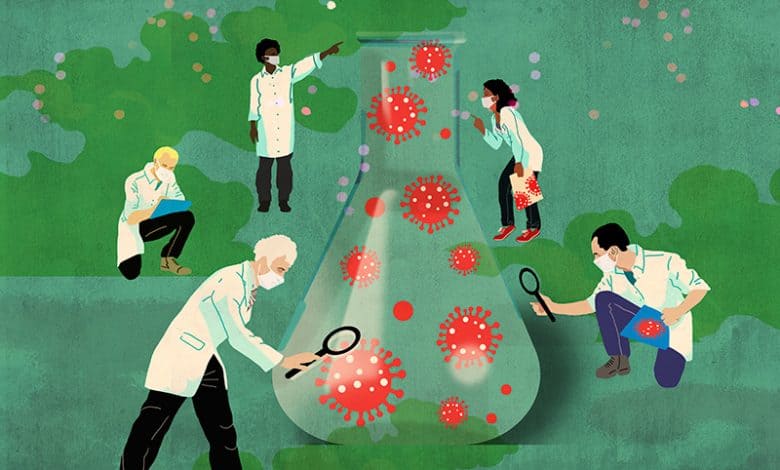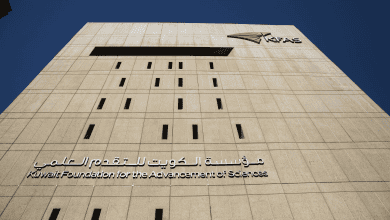Neurological Diseases and the Covid Pandemic
Differentiated Symptoms and Haunting Complications

The age frowned! The sun of the first of January 2020 was not like a cake of candy as predicted by the forecasters and the followers, but carried with it a girl from the daughters of the age who stunned the entire planet like swarms of locusts, taking off without sails, sailing without a compass, and preying on borders.
A few weeks after its sunrise, Covid-19 – was the fullest of the world and the concern of people, and its wonders began to follow and its complications were manifested, and the person who lost smell and taste became suspicious and charged, convicted until his innocence appeared, and under house arrest until his safety was proven!
Simple Symptoms Hide Disasters
As has become known, Covid-19 - in most patients manifests mild flu-like symptoms, but this virus exploits the elderly, people with chronic heart and lung diseases, and diabetics, making things worse and making them suffer from woe, perseverance and greatness of things unless others have tasted it. Although the disease is known to steal the breath of creation, specialists – in the midst of this surprise – were worried that survivors would suffer neurological repercussions. This concern was initially based on previous findings from the coronavirus family. Research centers, statistical institutions and universities competed in collecting cases and interpreting the results, to come up with regiments of analyses and conflicting bulletins of results!
At first, the researchers thought that the infection was limited to peripheral nerves, and the loss of smell and taste is only an example of it, but soon the virus came out on the text, and evidence trickled from all sides to show that survivors of this disease are indeed susceptible to mood disorders, anxiety, insomnia, chronic headaches and chronic fatigue, which had no clear explanation except the suspicion that it is a consequence of the newborn disease.
Our nightmares – doctors – got worse when patients themselves began to report a troubling set of psychological, behavioral, cognitive and cognitive disorders, so we began to learn about the "mental ambiguity" that became known as brain fog, from unexplained fatigue to memory lapses through psychosis, hallucinations and extremes of sensations, to end up with paranoia or thoughts of suicide.
Invasion of Brain Tissue
This strange combination of symptoms led researchers to suspect that the virus constituted a direct and sudden attack on braintissue, and began collecting the brains and brains of COVID-19 victims, and had to disassemble the convolutions of each individual brain, track its genes, document its proteins, and how microglia behave. They had to map the effects of the disease to understand how the virus changes the brain of its victim and drives her to commit suicide, as happened with an emergency department doctor in Colombia who worked on the front lines during the first brutal wave of the pandemic before she fell ill, healed and her mental health changed, only to end up committing suicide weeks later.
As the gunshot casing on the crime scene detects, the infected brain tissue segments showed remnants of the virus's DNA strand, and that they are 10 times less abundant in young neurons than the normal brain, these cells are so essential for learning and memory, for dealing with stress and for combining memories with emotions. It was also found that astrocytes were damaged or functioned, and many of those who survived were not working properly. These cells perform many functions, including biochemical support for endothelial cells that form the blood-brain barrier, which is considered the presidential or royal guard of the brain, and are responsible for the food supply chains of nerve tissue, regulating blood flow in the brain, as well as their role in the repair and scarring processes in the brain and spinal cord after traumatic infections and injuries. A decrease in the number of these cells may explain fatigue, brain fog, confusion and forgetfulness. As for its damage or damage to its function, it leads to depression of the patient, as if he is carrying a soul full of scars!
By studying the DNA fragments in these samples and using the help of a computer, specialists began to map the attack that this virus follows in its invasion of the brain, and the extent of its direct involvement in the mass ethnic genocide of these young and stellar cells. But the road was and still is long, the night is blind and the morning is far away!
Unpleasant Surprises
Scholars were surprised by some common findings with brain trauma patients such as veterans and victims of vehicle accidents, which also made them doubt the role of inflammatory mediators, especially after reports of cytokine storms that do not keep and do not shed!
The radiographs showed a clear decrease in the gray matter in the cerebral cortex, which contains the bodies of nerve cells. It was scary because it is very similar to the loss of this substance in cases of excessive alcohol consumption and long-term early use of cannabis, leaving patients groggy like field wheat.
The picture slowly began to become clearer, as the virus came to be thought to invade the brain through the nasal mucosa – where swabs are taken – or the nasopharynx, wrapping around the brain's presidential guard, the blood-brain barrier. It has become known that infection with this virus, especially in patients with chronic problems, leads to respiratory failure, where the patient struggles for some oxygen, which leads to suffocation of the brain due to the lack of oxygen received by it. This hypoxia affects all organs of the body, causing multiple organ failure or failure and diffuse intravascular coagulation DIC. In addition to the fact that these conditions mainly cause a change in mental state, it is not surprising that the patient develops encephalopathy or stroke (blockage of the arteries of the brain). Neurologists have reported blockages that formed during brain imaging, stunning them and grieving gangrene.
Post-infection Complications
Interestingly is the appearance of conditions that can be called (post-infection complications). The first of these reports was from afflicted Italy, where he talked about the diagnosis of Guillain-Barré syndrome GBS, where the nerve is stripped naked and lost its sheath and becomes like a desheathed electrical wire, from which charges leak and become useless, and paralysis begins in the patient from the bottom up, that is, from the muscles of the legs to reach the respiratory muscles, with this disease not responding to traditional treatments. This is reminiscent of the famous terrifying Zika virus a few years ago, but those years have passed and its people have passed!
So far, we have counted more than 14 neurological and psychological consequences of COVID-19, the most common of which are loss of smell and taste, stroke, encephalitis, neurocognitive disorders and psychological disorders, intracranial hemorrhage, Parkinson's, Guillain-Barré syndrome, some mental illnesses, psychosis, mood and anxiety disorders.
In the future, all of these diseases will require interventions to identify neurological syndromes associated with COVID-19 and develop diagnostic algorithms for them, in order to uncover the underlying disease mechanisms that will guide us towards effective treatments.
The importance of these neurological complications is that this neonatal disease will leave these patients with severe neurological sequelae, which may leave them out of time. Despite its low incidence of this disease, the continuation and spread of the epidemic will make the number of these patients noticeable, increasing the health burdens and social and economic costs, which in turn are already debilitating in light of this epidemic, in addition to the impact it has on our already suffering youth.
Health-care planners, policymakers, and decision-makers must prepare for this eventuality without relying on the mirage of potential and the illusion of miracles, while many ongoing studies seek to increase our knowledge base to address our battle with this disengagement virus. We hope that God will soon reveal this cloud and protect our peoples and humanity from this scourge.
Specialist in Emergency Medicine and Intensive Care




